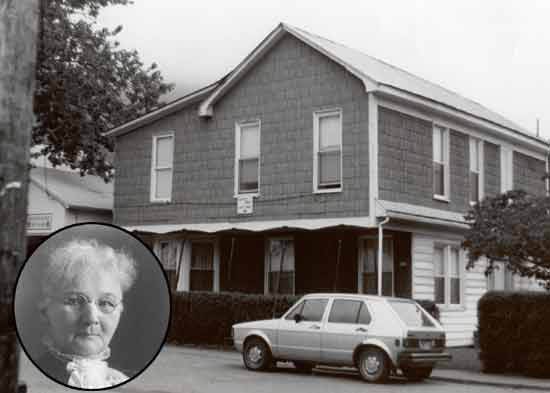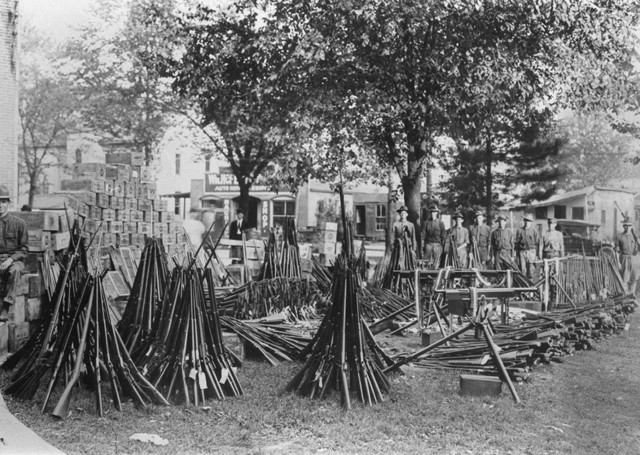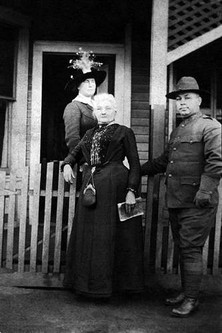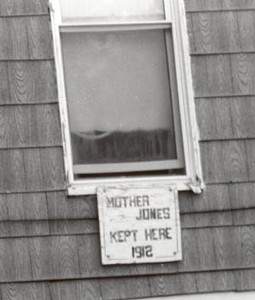Mother Jones Imprisoned at Pratt Boarding House, 1913 Historical Marker
Introduction
Text-to-speech Audio
This is the location of the former Pratt Boarding House, which became famous during the coal wars of 1912-1913 when West Virginia Governor William Glasscock ordered the arrest of labor activist Mary "Mother" Jones. Jones and other labor leaders were imprisoned inside the Pratt Boarding House until public opinion and possible federal intervention convinced the new governor to release Jones. The Boarding House was listed on the National Register of HIstoric Places in 1992 until it was demolished four years later and replaced with a four-unit apartment building. During the years 1912 to 1913, several of the most intense labor conflicts in American history occurred as miners throughout the Kanawha and New River coalfields of West Virginia attempted to organize. Labor activist Mary Harris "Mother" Jones helped organize the miners, traveling by foot throughout the area and helping local leaders organize a series of strikes throughout these turbulent years. Owing to her skill and compassion for their plight, the miners rallied around Mother Jones, whose presence in the coalfields both comforted the miners and troubled the coal operators. The miners' strike officially started on April 18, 1912 when coal operators refused to abide by the miners demands. The strike soon spread to include several thousand miners from Paint Creek to Cabin Creek. Mother Jones supported the miners and their attempts to gain leverage by working together. The mine operators shared a different perspective and hired the Baldwin-Felts detectives to disrupt the strike. By this time, the Baldwin_felts agency was notorious for their use of violence to curb strikes--a situation that often inspired equal violence on the part of striking miners. When some of the Baldwin-Felts mine guards threatened the families of miners, violence ensued on both sides. As Baldwin-Felts men brought weapons into the area, the coal miners attacked their positions leading to the deaths of several of the mine guards. After Mother Jones organized a march to the Capitol building to protest the actions of the coal companies and their operatives, the governor declared martial law and ordered the arrest of Mother Jones and other labor leaders. After federal officials indicated that they might intervene and as public attention turned against the state government, the new governor, Henry Hatfield, traveled to the area. Seeing how sick Jones had become in captivity, he ordered her release under the condition that she leave the state.
Images
Pratt Boarding House as it appeared before it was demolished in 1997 and removed from the National Register of Historic Places. The Post Office that appears to the left is still in use.

This picture shows how serious the miners were about the strike. The munitions in this picture were seized from miners after martial law was declared.

Mother Jones in front of the Pratt Boarding House where she was imprisoned temporarily in 1913.

This sign on the window of the former boarding house demonstrates the long historical memory of Mother Jones among the descendants of the coal miners.

Backstory and Context
Text-to-speech Audio
Tensions between coal miners and operators began in the late nineteenth century when attempted to unionize threatened the harsh control coal companies held over miners. During 1902 to 1903 Mother, Jones helped coal miners in West Virginia gain some success with unionizing. However, in the decade between coal operators were successful in driving out the Union. By 1912, the miners’ union contract expired, and the operators refused to increase the workers’ wages. Mother Jones came back to West Virginia to help organize the striking coal miners. On April 18th, the strike began in the Kanawha Valley. Coal operators hired the Baldwin-Felts detectives to work as mine guards. Violence subsequently ensued between the mine guards and the coal miners. The Baldwin-Felts detectives were instructed to harass miners and their families in hopes they would leave the Kanawha Valley. However, the miners did not back down from the intimidation tactics employed by coal operators.
Violence escalated from both sides prompting Governor Glasscock to declare martial law. The small town of Pratt was converted into a makeshift prison camp for miners arrested during the period of martial law. Here, the miners awaited trial through a military tribunal. Most notable of strikers arrested and imprisoned at Pratt was Mother Jones in February 1913. Mother Jones helped bring national attention to the plight of coal miners in West Virginia. Despite becoming ill with pneumonia, Governor Glasscock would not release Jones. However, when Governor Hatfield was elected he allowed Jones to receive treatment and recover in Charleston, but she was sent back to Pratt. Jones was able to sneak letters out further her cause for striking coal miners. After several months imprisoned at the Pratt Boarding House, Mother Jones was released, but not without violence and unconstitutional imprisonment according to Jones.
Sources
Corbin, David A. "The Mine Wars." e-WV: The West Virginia Encyclopedia. 20 October 2010. Web. 26 January 2015. Corbin, David A. Life, Work, and Rebellion in the Coal Fields: The Southern West Virginia Miners 1880-1922. Urbana: University of Illinois Press, 1981.
